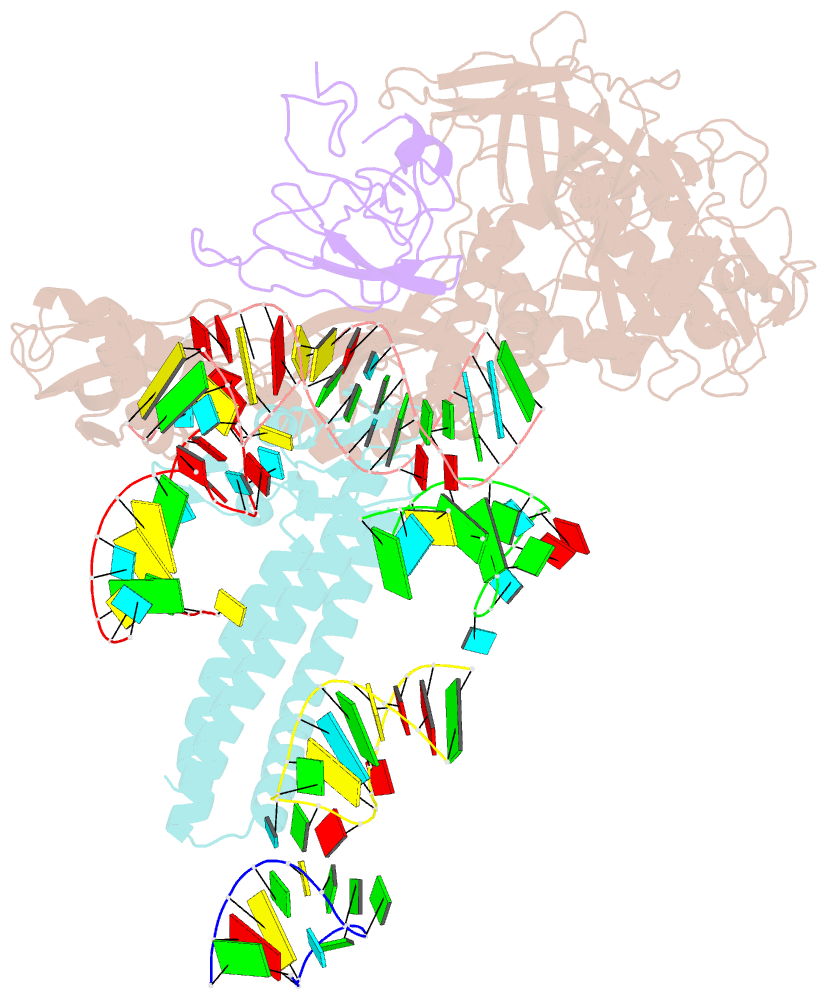Summary information and primary citation
- PDB-id
- 3j0e; SNAP-derived features in text and JSON formats;
DNAproDB
- Class
- translation
- Method
- cryo-EM (9.9 Å)
- Summary
- Models for the t. thermophilus ribosome recycling factor and the e. coli elongation factor g bound to the e. coli post-termination complex
- Reference
- Yokoyama T, Shaikh TR, Iwakura N, Kaji H, Kaji A, Agrawal RK (2012): "Structural insights into initial and intermediate steps of the ribosome-recycling process." Embo J., 31, 1836-1846. doi: 10.1038/emboj.2012.22.
- Abstract
- The ribosome-recycling factor (RRF) and elongation factor-G (EF-G) disassemble the 70S post-termination complex (PoTC) into mRNA, tRNA, and two ribosomal subunits. We have determined cryo-electron microscopic structures of the PoTC·RRF complex, with and without EF-G. We find that domain II of RRF initially interacts with universally conserved residues of the 23S rRNA helices 43 and 95, and protein L11 within the 50S ribosomal subunit. Upon EF-G binding, both RRF and tRNA are driven towards the tRNA-exit (E) site, with a large rotational movement of domain II of RRF towards the 30S ribosomal subunit. During this intermediate step of the recycling process, domain II of RRF and domain IV of EF-G adopt hitherto unknown conformations. Furthermore, binding of EF-G to the PoTC·RRF complex reverts the ribosome from ratcheted to unratcheted state. These results suggest that (i) the ribosomal intersubunit reorganizations upon RRF binding and subsequent EF-G binding could be instrumental in destabilizing the PoTC and (ii) the modes of action of EF-G during tRNA translocation and ribosome-recycling steps are markedly different.





